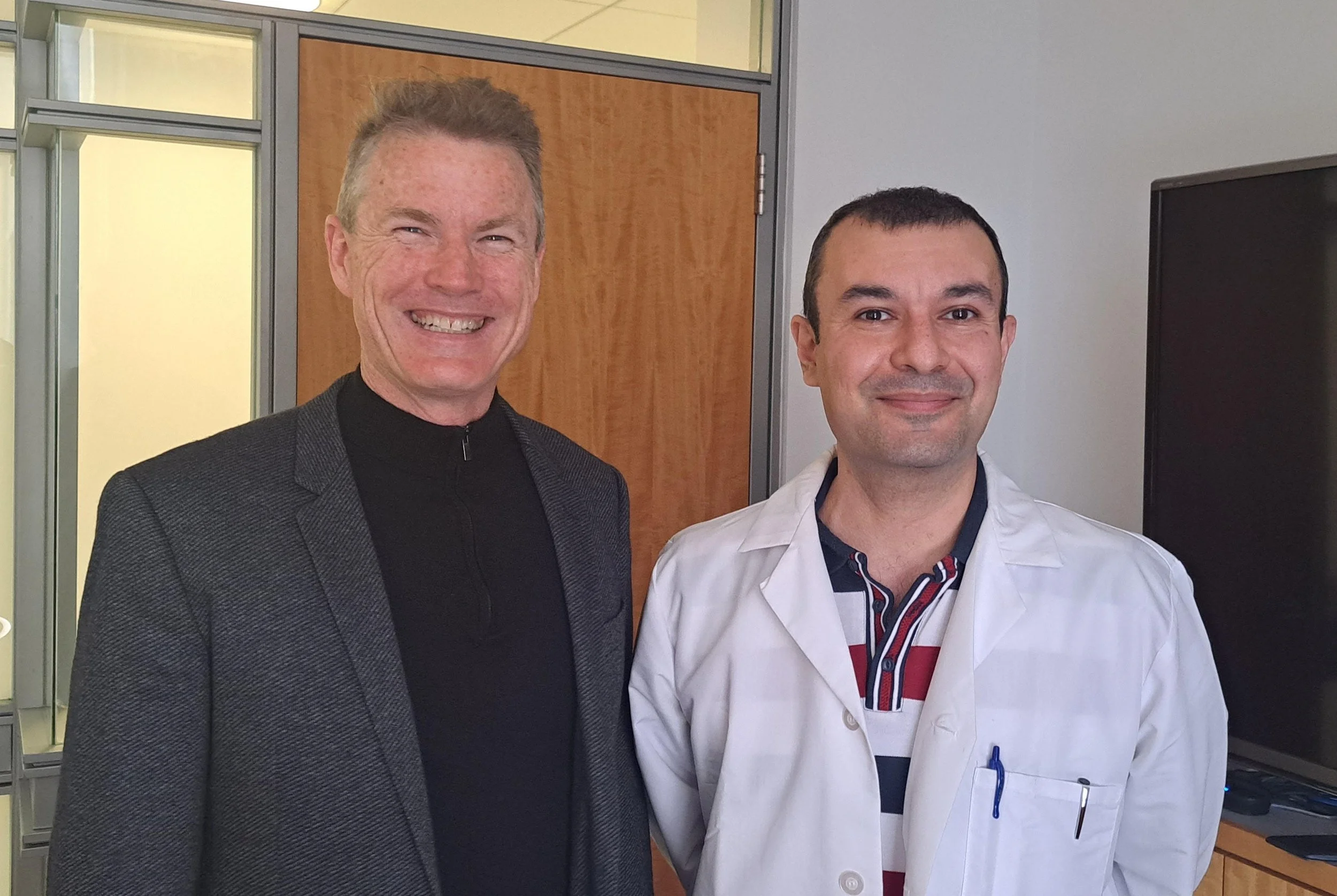Gene Therapies for Eye Disease
GENE THERAPIES FOR EYE DISEASE WITH AYKUT DEMIRKOL
MEETING AYKUT DEMIRKOL
Dr Aykut Demirkol is a Postdoctoral Researcher at the Harkness Eye Institute at NY Presbyterian, part of the Columbia University Medical Center, working with Professor Stephen Tsang on new gene therapies to correct retinal diseases. This is SUCH an important area in the future of medicine, as so many people around the world are debilitated by eye diseases. The team at Tsang lab have already used gene editing to successfully restore vision in mice suffering from retinitis pigmentosa, and have used CRISPR to repair a genetic mutation responsible for retinitis pigmentosa in induced pluripotent stem cells derived from a human patient. They expect human trials to begin in a few years. Tsang uses the term “gene surgery” to describe his methods.
Having recently delivered keynotes on the future of ophthalmology for Alcon Labs, I asked if I could drop by for an update, and Aykut was kind enough to make time to give me a deeper understanding of their work. The recording and transcript are below. Please note that the audio quality wasn’t as good as it normally is and the transcript may be the easier option to navigate.
CHECK OUT THE PODCAST TRANSCRIPT →
HERITABLE VERSUS NON-HERITABLE FACTORS
The split between heritable and non-heritable factors for a single disease was an important theme and I was interested to learn that their attack on retinitis pigmentosa is two-pronged: one to edit the heritable component; the other to alter the metabolism of the cell in order to reduce it’s ‘disease potential.’ It’s a theme I hear often when discussing CRISPR therapeutics: biology is complex, and diseases are rarely so simple as to be eliminated through a single edit!
PATHWAY TO FUTURE THERAPIES
Interesting also, that retinitis pigmentosa is the lab’s big target not only because of the seriousness or prevalence of the disease but because doing the science is easier – not least because much of the experimental work can be done outside the body. And again this tallies with what I hear in other labs, such as when I visited the MD Anderson Center to discuss the future of cancer therapies. The most efficient way is often to follow what’s easiest, then see where the path leads, with one success suggesting the next – as opposed to shooting for the moon from the outset. An important consideration, too, as I try to understand the timeline for how the future of medicine will unfold.
CHANGING THE WORLD FOR HUNDREDS OF MILLIONS
Most inspiring was the confidence and the breadth of ambition. We are tracking for not one but many therapies, spanning the full spectrum of eye diseases with heritable components where, to date, there have not been effective medical solutions. Globally, approximately 1.5 million people suffer from retinitis pigmentosa. If Aykut and his colleagues stop there, they will already have a huge and positive impact on the future. But they won’t stop. And when you consider, for example, the 196 million sufferers of age-related macular degeneration (and rising, as the global population ages) you know that Aykut and his colleagues and peers in other labs are truly going to change the world.

